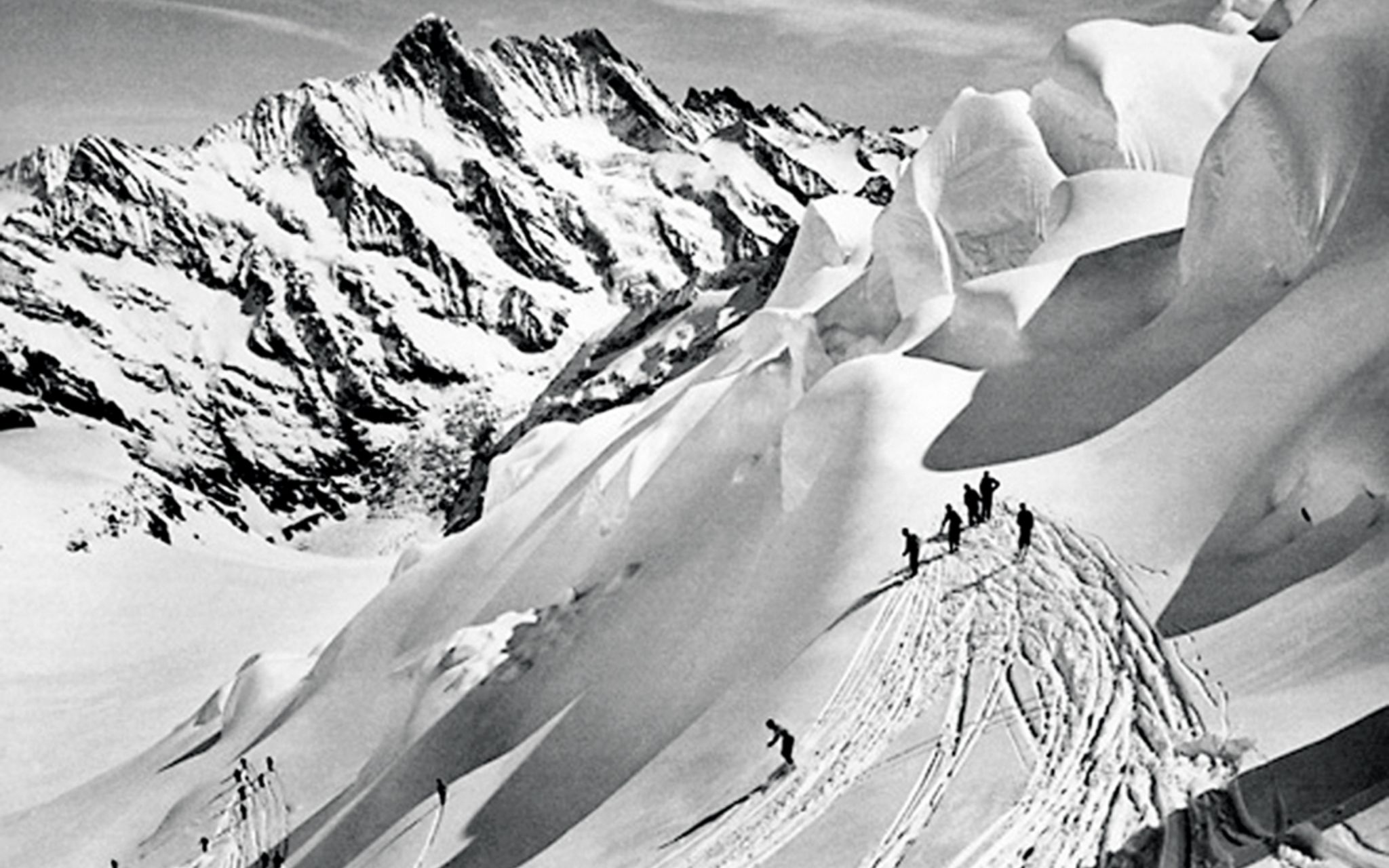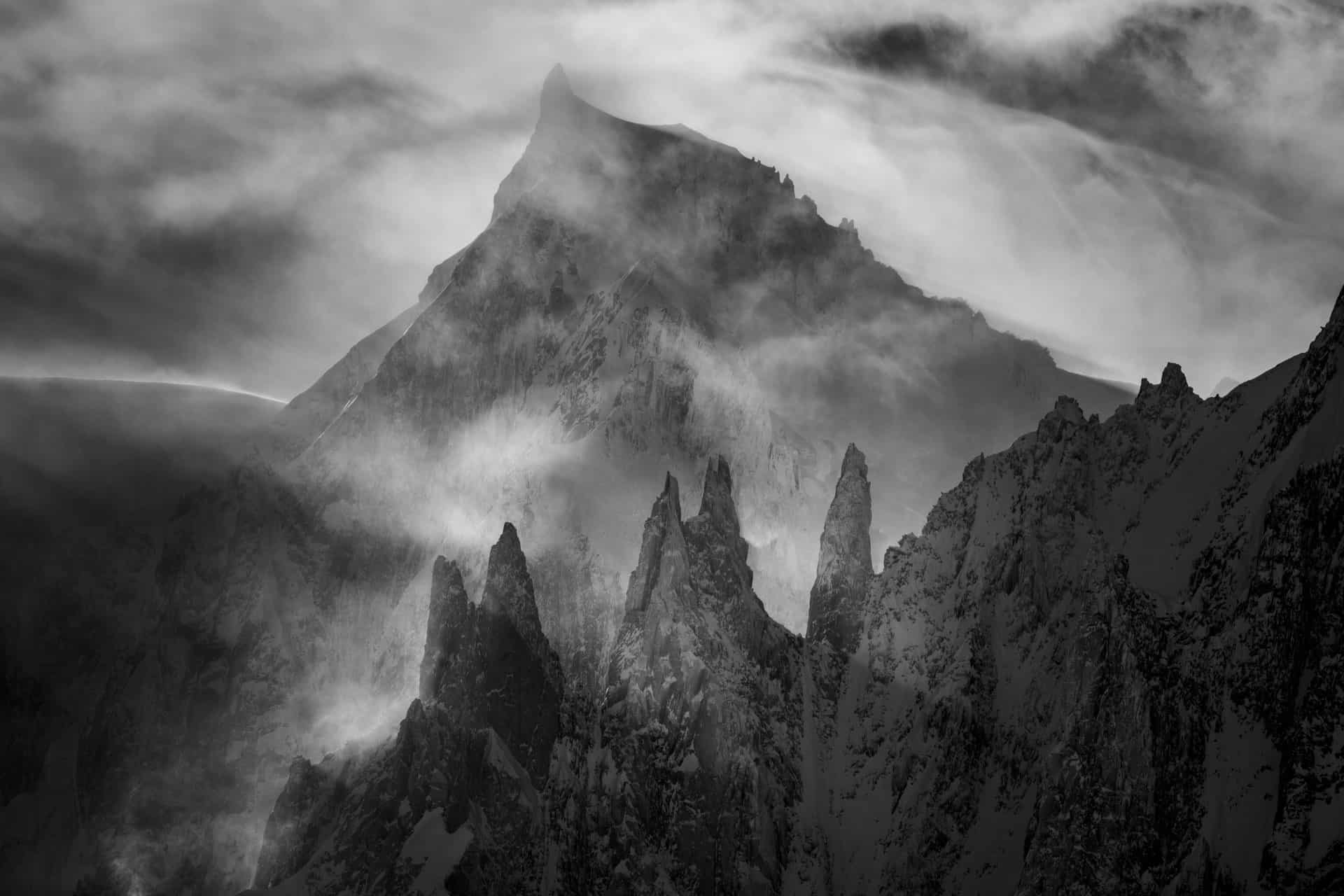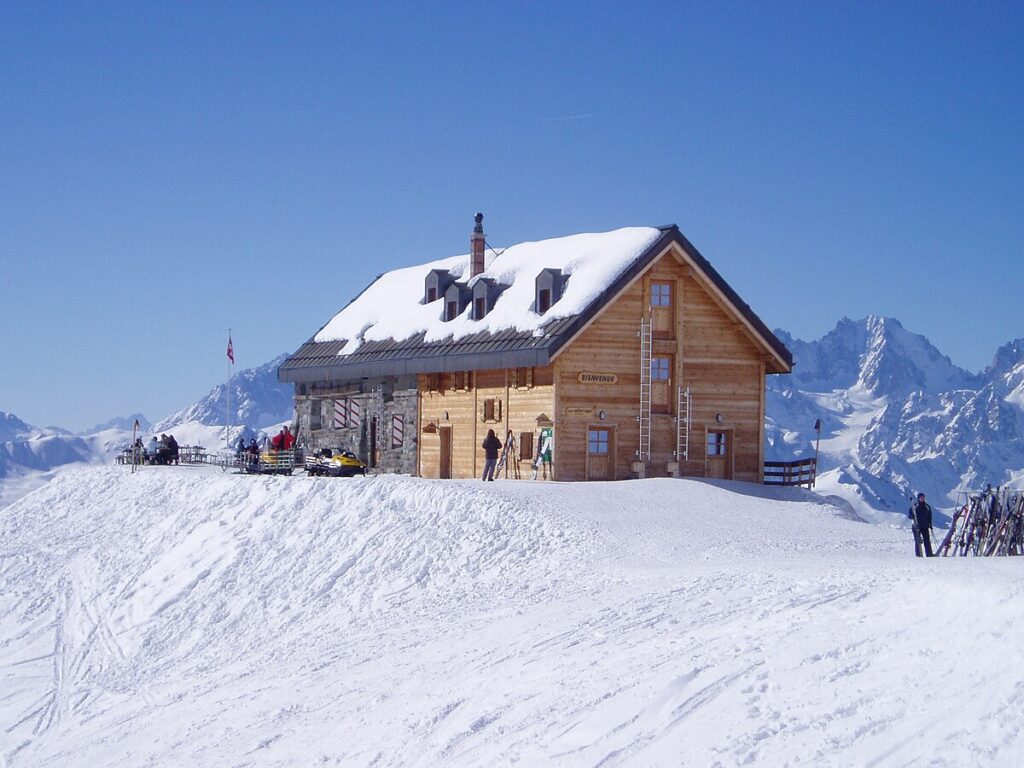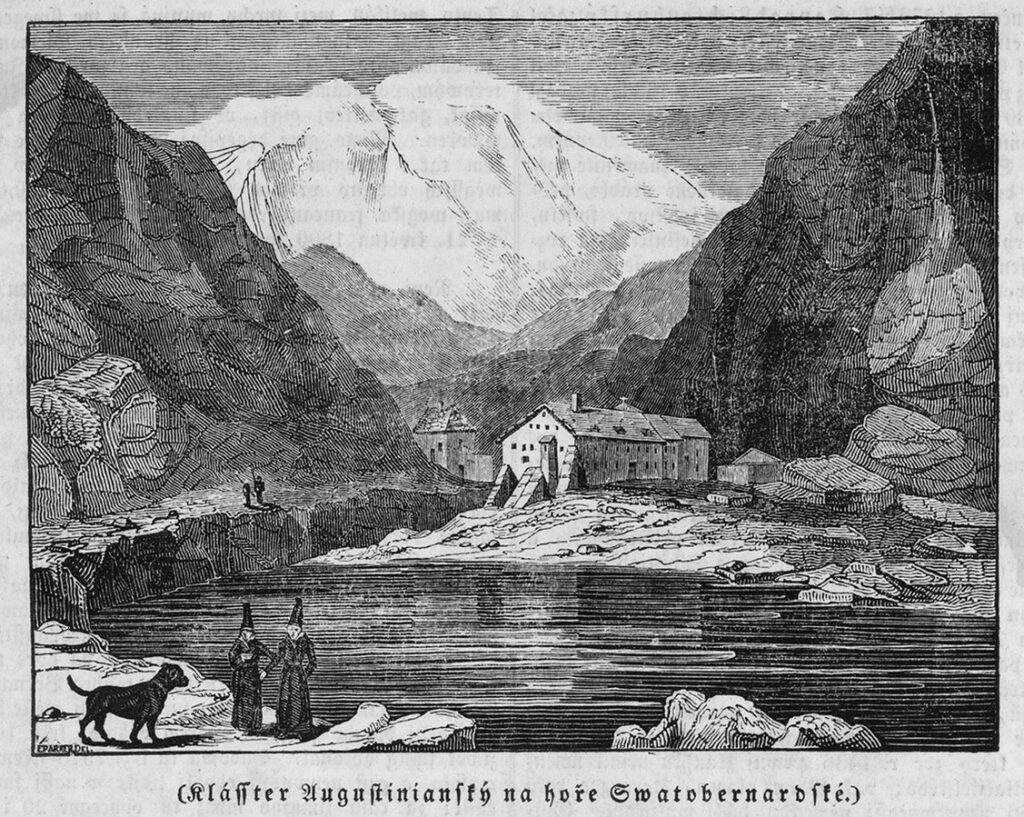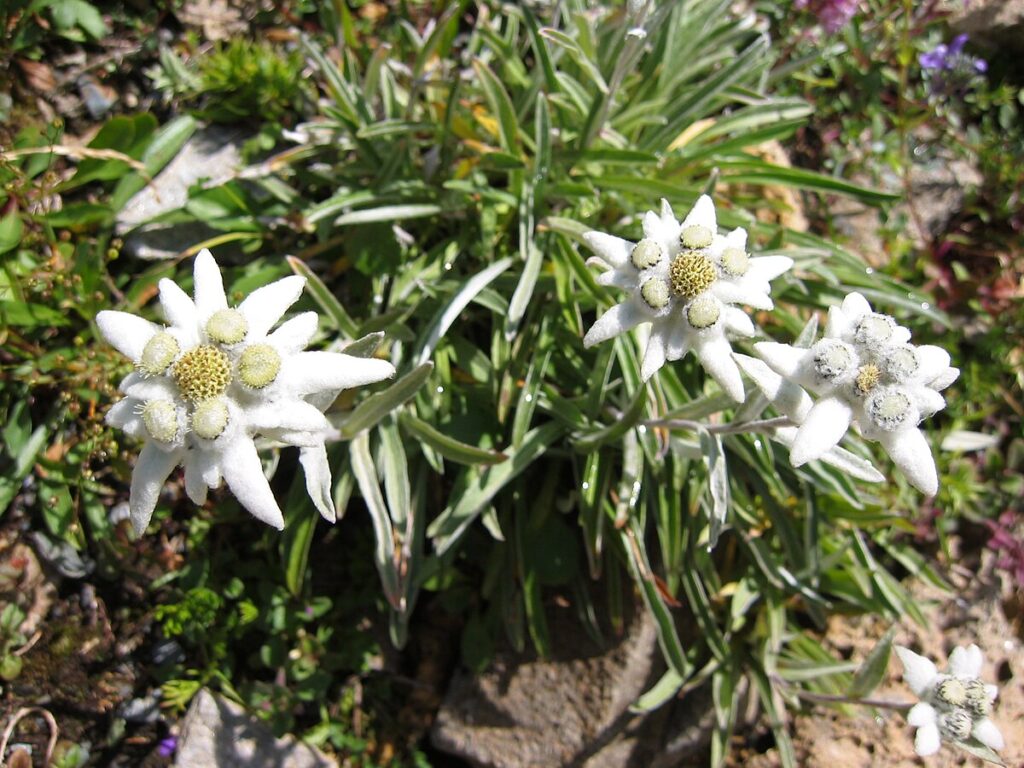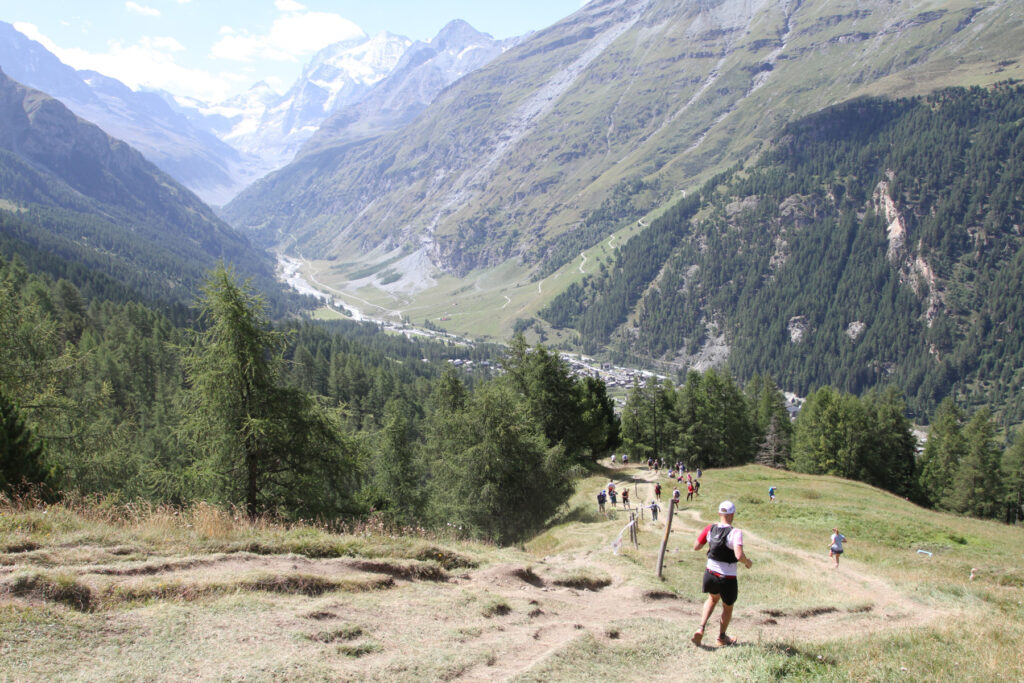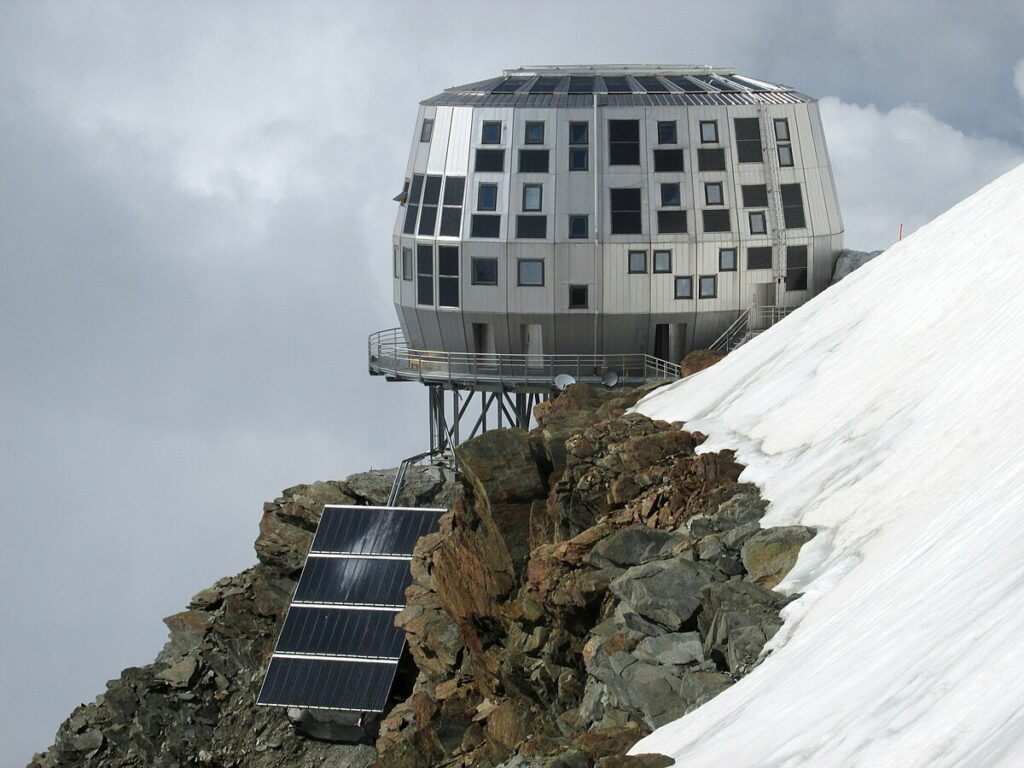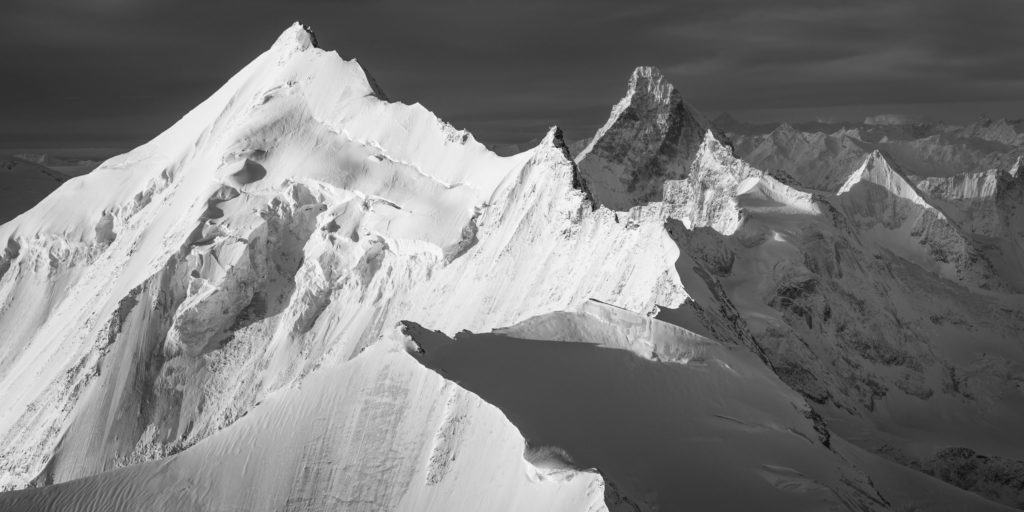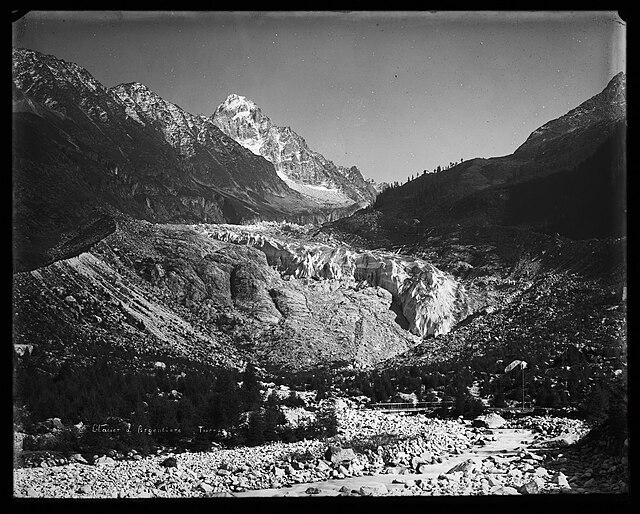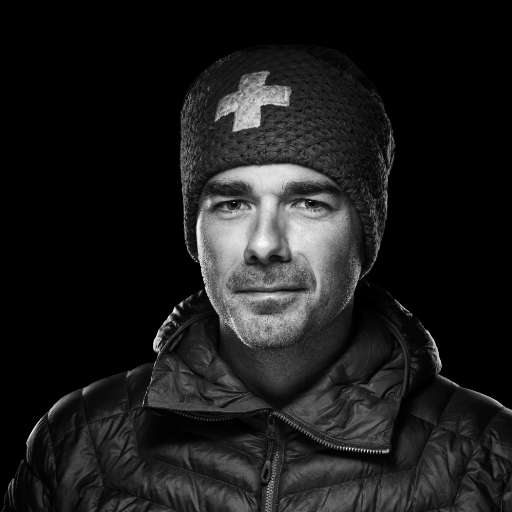Widely recognized as the most gifted mountain guide of his generation, Armand Charlet rises to every challenge the Alps throw at him. Tame theAiguille Verte and the Aiguilles du Diable, he sails from firsts to incredible feats, on the flanks of Mont Blanc and at the gates of heaven. I invite you to discover the story of Armand Charlet, portrait of a legendary guide.
Armand Charlet: Birth of a legendary guide
Armand Charlet was born in Argentière on February 9, 1900. In the Chamonix valley, the needles of rock bend over his cradle as a promise. An unrivalled glaciarist and a remarkable rock climber, the young mountaineer had it all. His sense of terrain, confidence and agility soon made him a virtuoso mountaineer. A true mountain prodigy, he became the guide everyone wanted.
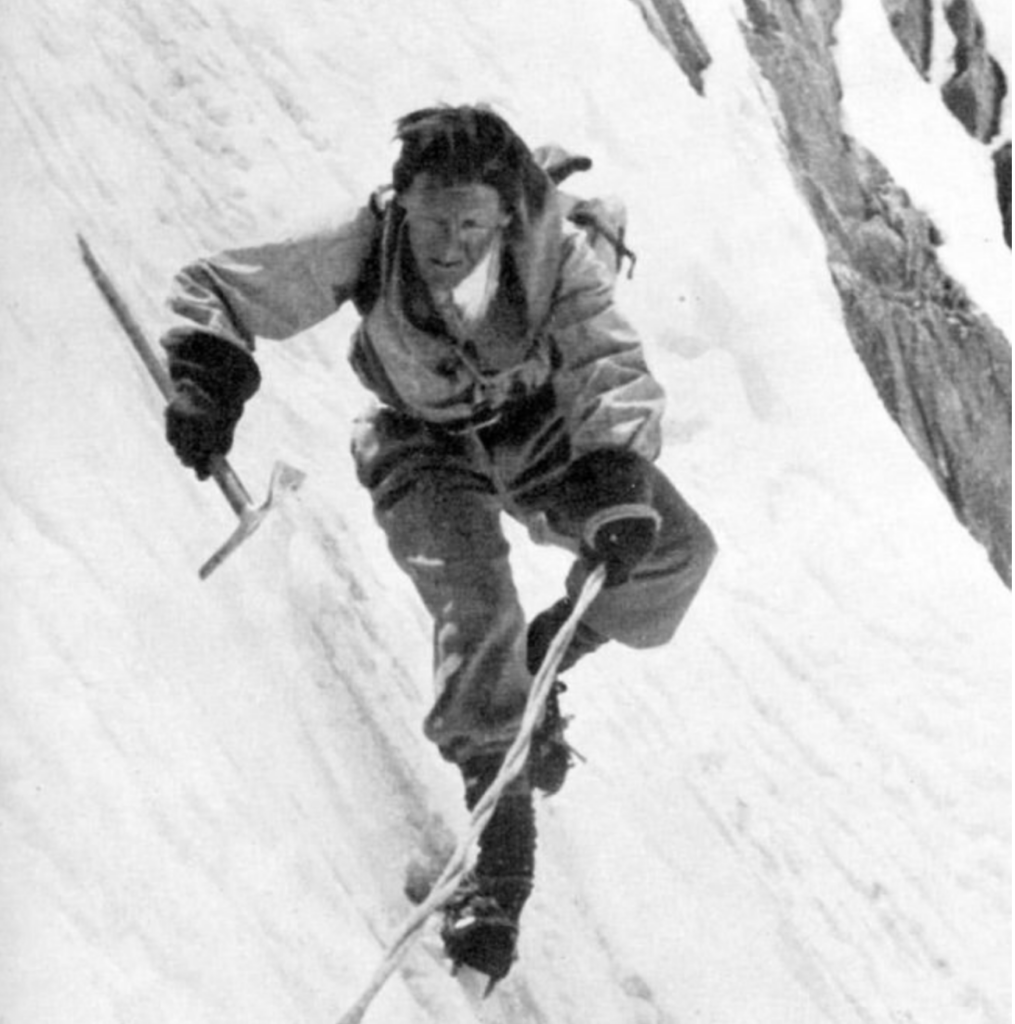
He soon began to measure himself against the most inaccessible Alpine summits . His heart vibrates to the rhythm of his crossings. The Alps and their peaks are essential to his happiness and balance. He is so daring that he sometimes regrets not meeting enough clients of his size. Hand-to-hand with the rock, he multiplies his acrobatics at a time when pitons are still rare. Over the years, he completed 3,000 ascents and guided over 1,200 clients in the high mountains. Records were set throughout his fabulous career. Armand Charlet climbed theAiguille Verte more than 100 times and opened 7 new routes. And among his most dazzling victories, he was the first to conquer the fearsome Aiguilles du Diable.
Armand Charlet and theAiguille Verte : One man's fascination with the high mountains
Armand Charlet has a deep and abiding admiration for theAiguille Verte. An unwavering attachment, a constant obsession, binds the guide to this summit. The tutelary figure of the village of Argentière, the torch that lights up the Chamonix sky, theAiguille Verte has inspired mountaineers since their earliest days. It demands perfect mastery of alpine techniques and agility in all circumstances from the men who dream of conquering it. The ordeal is terrible, the dangers constant. But when they succeed in reaching its peak, at 4122 m altitude, it opens the way to fulfillment.

Armand Charlet knows it, he feels it, he has always craved it. TheAiguille Verte was his muse, his breath of life. On September 22, 1924, he embarked on an assault on the mountain with Georges Charlet and Georges Simond. Following the normal route inaugurated by Edward Whymper in 1865, the climbers ascended from the Talèfre glacier to the Aiguille du Jardin. Then, at the foot of the Aiguille du Jardin's Grand Gendarme Ouest, they decided to leave the main route and head further right along an unexplored passage. The mountain, stunned by their temerity, inflicted them with the crossing of ice chimneys. But the men persisted and managed to reach the ledges that took them beyond the Grand Gendarme Ouest. They had just crossed the pass that would become our guide's crowning glory. The Col Armand Charlet, linking the Aiguille du Jardin to the Grande Rocheuse and theAiguille Verte. All that remains is to follow the Jardin ridge to the summit theAiguille Verte.
On September 21, 1926, Armand Charlet inaugurated the west ridge of the Aiguille Sans Nom before traversing it to theAiguille Verte. But it was in 1928 that he achieved his most remarkable first ascent. With Camille Devouassoux, he conquered theAiguille Verte via the Nant Blanc side of the Aiguille Sans Nom. Their adventure begins below the Col des Drus. One obstacle follows another. The mountain is relentless in the face of their courage. Armand Charlet devotes all his energy to this race. Enraged, determined, more Powerful than ever, he wrests every step from nature without mercy. Ice, rock, everything stands in the way of his victory. With crampons on his feet, he even climbs on his friend's head to gain ground. By the time they reached the summit Aiguille Verte, they were exhausted. Armand Charlet would later admit to having reached his own limits. But he was beaming, the happiest of all. His masterstroke resonates throughout the Alps, and will leave its mark on the history of mountaineering for a long time to come.
On July 1, 1932, Armand Charlet opened theAiguille Verte route via the Couturier couloir alongside Marcel Couturier and Jules Simond. And on August 22, 1935, together with Dimitri Platonov, he inaugurated the direct Charlet Platonov route from the Nant Blanc side to the summit Aiguille Verte. The king of the Argentière guides climbed his favorite mountain a hundred times over the course of his life. With the same determination, and an ever-renewed joy. On his crests, he completed 14 itineraries and inaugurated 7. But far from limiting himself to this high summit, he cultivated the art of mountaineering on many other peaks in the Mont Blanc massif.
Armand Charlet and the Aiguilles du Diable: mountaineering at the summit its art
On August 13 1923, Armand Charlet watched helplessly as Henri Bregeault, Paul Chevalier and Jacques de Lépiney conquered Pointe Carmen. A thorn in the side of our mountaineer, who vows to be the first to conquer all the other peaks in the Aiguilles du Diable. On July 8, 1925, the time had come for him to keep his promise. Sent on reconnaissance by their client Émile-Robert Blanchet, Armand Charlet and Antoine Ravanel set out for the Aiguilles du Diable, the eastern foothills of Mont Blanc du Tacul that have captured the imagination of mountaineers everywhere. Suddenly, the Isolée catches their eye. Like a spear pointing skywards, it challenges the guides to reach it. So they climbed up and over its vertiginous walls. Defying the laws of nature, they scale an impressive rock overhang and reach the summit l'Isolée without the aid of a piton or nail-studded shoes. And when they took their client to the summit on July 14th, he was understandably annoyed at not being the first to set foot there.
One after the other, the Aiguilles du Diable give way to Armand Charlet. On September 1, 1925, alongside Antoine Ravanel and his loyal client Jean Chaubert, he made the first ascent of Pointe Chaubert and Corne du Diable. Then, on July 27, 1926, he delivered the coup de grâce to the Aiguilles du Diable by making the first ascent of Pointe Médiane in the company of Jean Devouassoux, Émile-Robert Blanchet and Jean Chaubert.
The Aiguilles du Diable are now conquered, propelling Armand Charlet to the summit his career. But his achievement leaves him with a taste of unfinished business. Deep down, he knows there's more to come. The crossing of the five peaks as the culmination of an exceptional adventure. On August 4, 1928, he embarked on this perilous race in the company of Georges Cachat, Miss Myriam O'Brien and Robert L.M. Underhill. From the Corne du Diable, they reached the Pointe Chaubert, the Pointe Médiane and the Pointe Carmen to finally reach the Isolée or Pointe Blanchet, which culminates at 4114 m altitude on the flanks of the Mont Blanc du Tacul. Armand Charlet exults, his triumph complete. His name will forever be linked to the prodigious history of the Aiguilles du Diable.
Armand Charlet achieved many other firsts at the summit the Alps. These unforgettable climbs made him the master of Mont Blanc. In summer as in winter, he multiplied his traverses. From the Aiguilles Rouges to Mont Dolent, from the Dent du Géant to the Aiguille du Plan, or from the Aiguille du Grépon to the Aiguille de Bionnassay, he traverses the crests in search of records. And all the mountains of Chamonix still proclaim the greatness of this man who loved them so much.
Portrait of Armand Charlet: King of mountain guides
A member of the Groupe de Haute Montagne (GHM) since 1925, Armand Charlet helped found the Syndicat National des Guides de Montagne (SNGM) in 1946. Deeply involved in the life of the ChamonixMont Blanc valley, he contributed to the professionalization of the guiding profession. A teacher at the Ecole Nationale de Ski et d'Alpinisme (ENSA), he became the school's technical director in 1945. He defended the idea of enhancing the value of the guiding profession and worked towards the emergence of a single, comprehensive training program for all. Thus, in 1948, the national guide diploma was created at ENSA. Armand Charlet taught the profession with rigor. An uncompromising yet respected teacher, he passed on the values of mountaineering. Values he embodies better than anyone else.
Armand Charlet: An Alpine vocation
A fervent defender of the Alps, Armand Charlet contributed to highlighting them in film and literature. In 1942, he starred in Marcel Ichac's film À l'assaut des Aiguilles du Diable. In this film, he offered viewers the chance to experience with him the repeat of his first crossing of the Aiguilles du Diable, 14 years earlier. Breathtaking images, beautiful scenery and a new feat for this legendary mountaineer.
Armand Charlet also left his mark on literature. In his autobiography, Vocation alpine, he recalls his youth, his first steps on the crests of Mont Blanc. And the reader takes to the skies with him, sharing the unforgettable experience of crossing the Aiguilles du Diable in 1928.
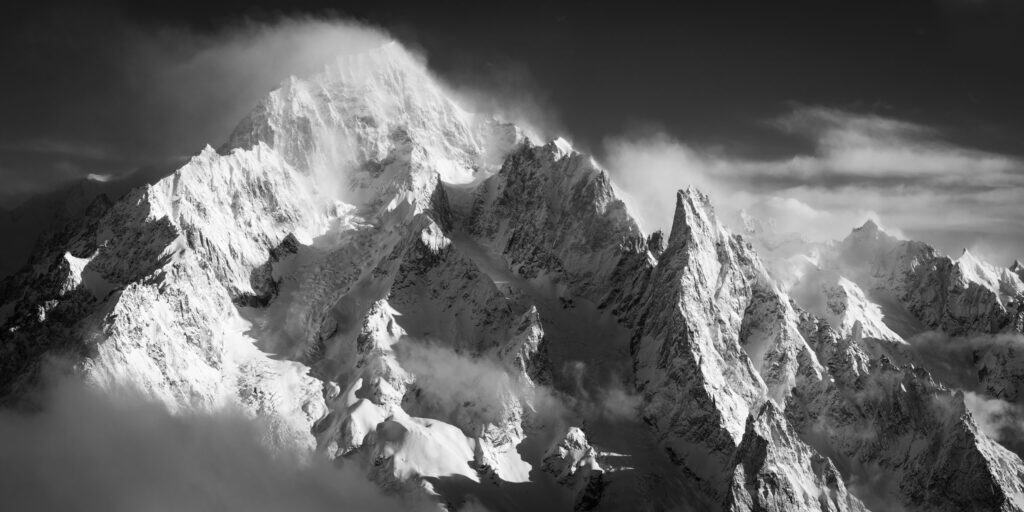
In honor of his exploits, his career and his unconditional love of the Alps, Armand Charlet received numerous awards. Officer of the Legion of Honor and recipient of several medals for his work as a mountain guide and rescuer, he died in Argentière on November 28, 1975. A child of the Chamonix valley, he now rests there, under the benevolent gaze of all the mountains that gave him his glory.Armand Charlet, an outstanding figure in mountaineering, remains one of the most brilliant guides of the 20th century. An unrivalled mountaineer, defending the high mountains with all his heart and soul. A legendary man whose name will forever be linked to the summits Mont Blanc, theAiguille Verte and, more than any other, the Aiguilles du Diable.
